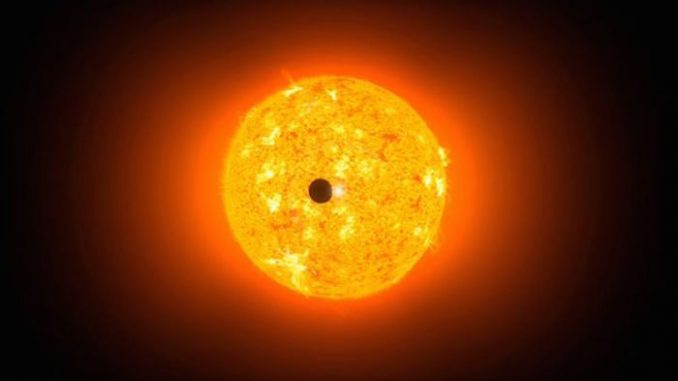
At the beginning of May the planet Mercury is set to travel in front of the sun in a rare event that we will be able to see from Earth.
The planet will not travel between our planet and the sun again for another three and a half years.

BYPASS THE CENSORS
Sign up to get unfiltered news delivered straight to your inbox.
You can unsubscribe any time. By subscribing you agree to our Terms of Use
Latest Video
Businessinsider.com reports:
Here’s everything you need to know to watch.
The transit of Mercury occurs when Mercury passes between the Sun and Earth, and happens around 13 or 14 times each century. This year the event kicks off on May 9 just after 7am EDT (9pm AEST, 11am UTC), with the planet taking around 8 hours to make its glorious way across the Sun.
The good news is that the entire event will be visible to those on North America’s east coast, as well as most of South America, western Europe and the west coast of Africa. And stargazers in western Asia and western North America will also be able to see part of the transit.
The bad news is that people in Indonesia, Australasia and eastern Asia are going to miss the whole thing during our night time, but don’t panic, because there are plenty of options for viewing online (including the player below).
For those of you lucky enough to be heading outside to watch, hopefully it goes without saying that you can’t look straight at the Sun to watch the transit, if you want to avoid burning out your retinas. But there are plenty of safe ways to witness the transit in all its glory — all it takes is a little bit of planning, and you’ve now got a month to get yourself sorted, so there’s no excuse.
First thing you’ll need is a telescope, because Mercury is going to look pretty tiny compared to our Sun. Then you’ll have to order a solar filter that can be safely attached to your telescope without risk of slipping off (because if staring at the Sun with your naked eye is bad, looking at it unprotected through a telescope is even worse). You can get some good advice over on Space.com on which solar filters are your best bets.
You might also need some magnification to be able to see the whole thing, because Mercury is going to look pretty tiny in front of the Sun (it’s 1/160th of the Sun’s diameter).
“Even with proper equipment, Mercury can be hard to see, because it is so small compared to the size of the Sun,” writes Geoff Gaherty for Space.com. “I observed the transit of 1999 with an 80-mm refractor, and found that I needed a magnification of 67x in order to see Mercury; it was too small to see at 45x.”
So once you’ve got the right equipment sorted, what can you expect to see? The event is pretty similar to the transit of Venus back in 2012, except smaller, so basically it looks like a small black dot moving across the surface of the Sun – which arguably isn’t quite as pretty as a meteor shower or solar eclipse. But there’s so much more to it than that.
“For me, the most exciting thing about observing a transit is more aesthetic than scientific. To see a tiny world silhouetted against the mighty sun gives a striking view of the scale of the Solar System,” writes Gaherty.
After all, how often do we get to see a planet roughly 77 million km (48 million miles) away from us pass in front of the star that gives us life, and really have the chance to ponder our place in the Milky Way?
If all the telescopes and filters sound like too much work, or you’re just in the wrong place at the wrong time to witness the event, like we are, you can check out the livestream via Slooh below. Enjoy, and don’t forget to set those alarms:


